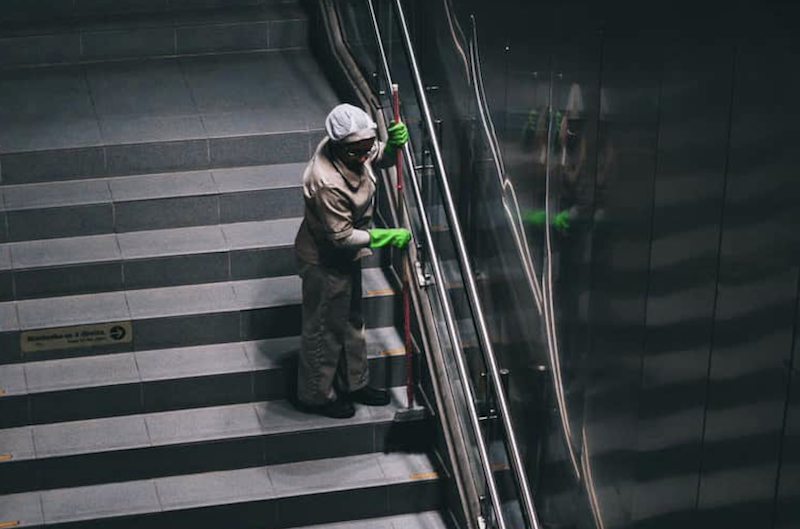First: a note about your cleanser – Hydrogen Peroxide kills corona and is more environmentally friendly than bleach. Consider using hydrogen peroxide, if it’s an option. But if you must use bleach, here are the implications for your LEED certification:
We are not aware of any official ruling about a pandemic, but we also don’t think you should be concerned that using bleach during the national emergency will threaten your LEED certification. Here’s why:
If your properties are certified as LEED for New Construction, the certifications are based on how the buildings were designed and constructed, not operated. In this case, your certification will not be at risk if you use bleach to disinfect.
If your properties are certified as LEED for Existing Buildings and you want to continue using the traditional EB O&M path, it matters if you use non-green cleaners somewhat. Only 75% of your cleaning materials, by cost, need to meet LEED requirements. Temporarily using bleach is unlikely to put your LEED certification at risk if you use greener products most of the time. We also suspect (but can’t confirm) that even if you fall a little short of 75%, that GBCI would be lenient here.
If you’re using Arc to recertify your LEED O+M buildings, then you will only use the five performance-based categories, which do not include tracking your cleaning product purchases. In this case, using non-green cleaners will not put your LEED certification at risk.
Bottom line: Do what you need to do to disinfect your spaces. Your LEED certification should be fine.
The EPA has released a list of cleaners that kill coronavirus, and some are greener than others – if possible, go as green as possible while prioritizing safety. “Using the correct disinfectant is an important part of preventing and reducing the spread of illnesses along with other critical aspects such as hand washing,” EPA administrator Andrew Wheeler said in a news release.
The full list is here. Hydrogen Peroxide kills corona and is more environmentally friendly than bleach. Consider using hydrogen peroxide, if it’s an option.
We hope this helps! Let us know if you have any questions. And in the meantime, keep practicing social distancing, and let’s work together to #flattenthecurve.
More from Author
Paladino | Jan 10, 2022
The future of regenerative building is performance-based
Why measuring performance results is so critical, but also easier said than done.
Paladino | May 26, 2021
Injecting embodied carbon capability into the integrated design and construction process
Embodied carbon is defined as the carbon footprint of a material, and is expressed in metric tons of CO2e.
Paladino | May 12, 2021
Climate modeling for a resilient business and future
This post explores changes that developers and their teams need to make to their risk and resilience strategies by climate modeling for climate change.
Paladino | Apr 26, 2021
Building performance requirements are coming: Are you ready?
Building Performance Requirements are trending nationwide and are likely coming to a county near you.
Paladino | Feb 8, 2021
Six lessons learned from our first Fitwel Viral Response Module certification
The Fitwel Viral Response Module is one of several frameworks that real estate owners and operators can use to obtain third-party certification for their efforts ensuring their properties are ready for a safer and healthier return to work.
Paladino | Jan 14, 2021
Shift your energy to carbon
Now is the right and necessary time for the commercial real estate industry to shift its environmental strategy from just energy, a carbon contributor, to carbon itself.
Paladino | Nov 13, 2020
5 tips when designing for daylight
Daylight modeling is a tool to examine how daylight interacts with a building, and how that natural light behaves within interior spaces.
Paladino | Jul 16, 2020
COVID readiness: IWBI and USGBC seek to help businesses quantify risk
In an effort to address the risks of COVID-19 at the building scale, USGBC and IWBI have analyzed existing certification guidelines and drafted new, relevant content.
Paladino | Jun 5, 2020
3 strategies to improve the wellness of building systems and gain tenant trust
Three operational issues that must be prioritized for every building in order to achieve tenant trust are air quality/ventilation, relative humidity, and building commissioning.
















